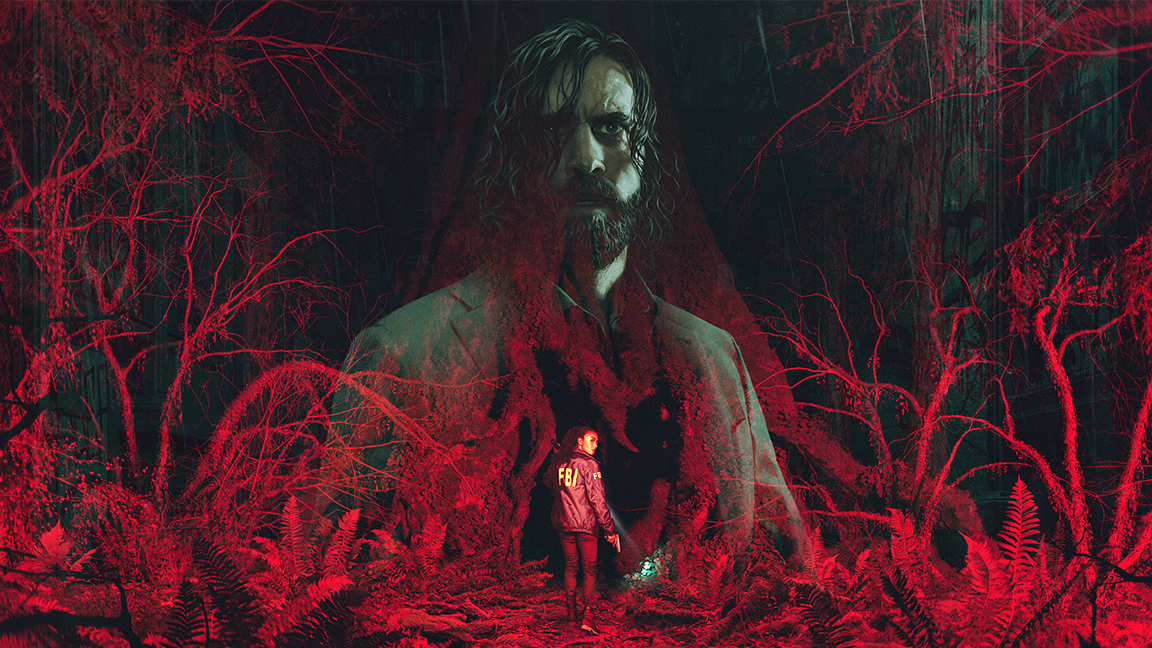
Alan Wake 2 is the long awaited sequel to Remedy Entertainment's cult horror video game, and sees the return of the titular author from a nightmare of his own making. Everywhere you look, you cannot escape the trees, with the game’s key art centring the ghostly visage of Alan Wake alongside new protagonist FBI agent Saga Anderson, framed in a claustrophobic wreath of red branches.
Environment design is often essential to crafting a tone of mystery and dread, and the deep forests of the United State’s Pacific Northwest are especially vital to Remedy’s next hair-raising title. (Read our guide to creating atmospheric game environments and our feature on the best Unreal Engine plugins for more.)
I travelled to the Remedy Entertainment's studio in Espoo, Finland, to investigate how the developer teases out terror from between these virtually recreated trees. In order to accurately represent the Pacific Northwest, foliage and photogrammetry artist Ciara Creagh-Peschau tells me that, in addition to a research trip in 2019, the team have also pored over plenty of scientific surveys documenting the biology of the area.
Alan Wake 2: seeing the forest for the trees
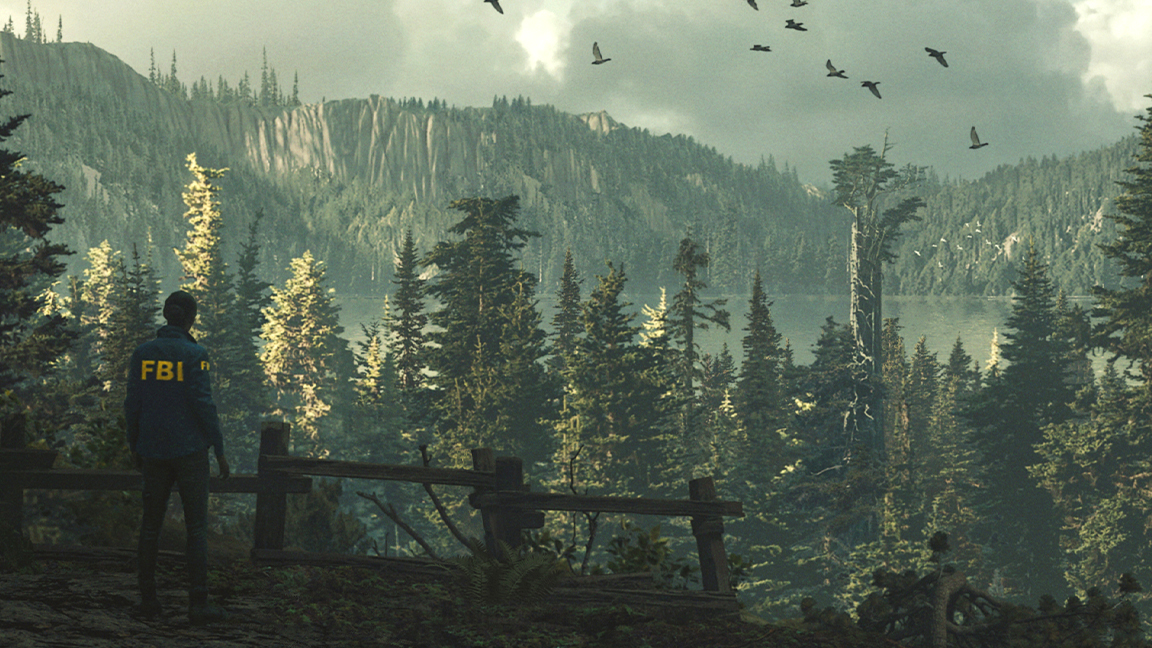
"I've then put a lot of that research into kind of an easier access document that you can see here," Creagh-Peschau explains, showing me a quick reference diagram, "Where basically we've summarised a lot of the biology terms, but then put it in kind of a framework that's easier for environment artists to work with."
Alan Wake 2 takes place across a number of contained hubs, including the previously explored Twin Peaks-like smalltown of Bright Falls, the mysterious Cauldron Lake, and the never before visited community of Watery. These all appear on the quick reference diagram, next to an axis listing altitude and a scatter plot of various species of flora.
Creagh-Peschau continues, "This is basically like a map of an average mountain in the Pacific Northwest and each of our hubs are plotted in terms of altitude. That helps environment artists understand which species would grow where and how to use them, and in what density. Then we're breaking down each different species, and how often they can occur in different hubs - like what kind of preferences they have for moisture and light and all of those kinds of things."
Alan Wake 2: creating a sense of space
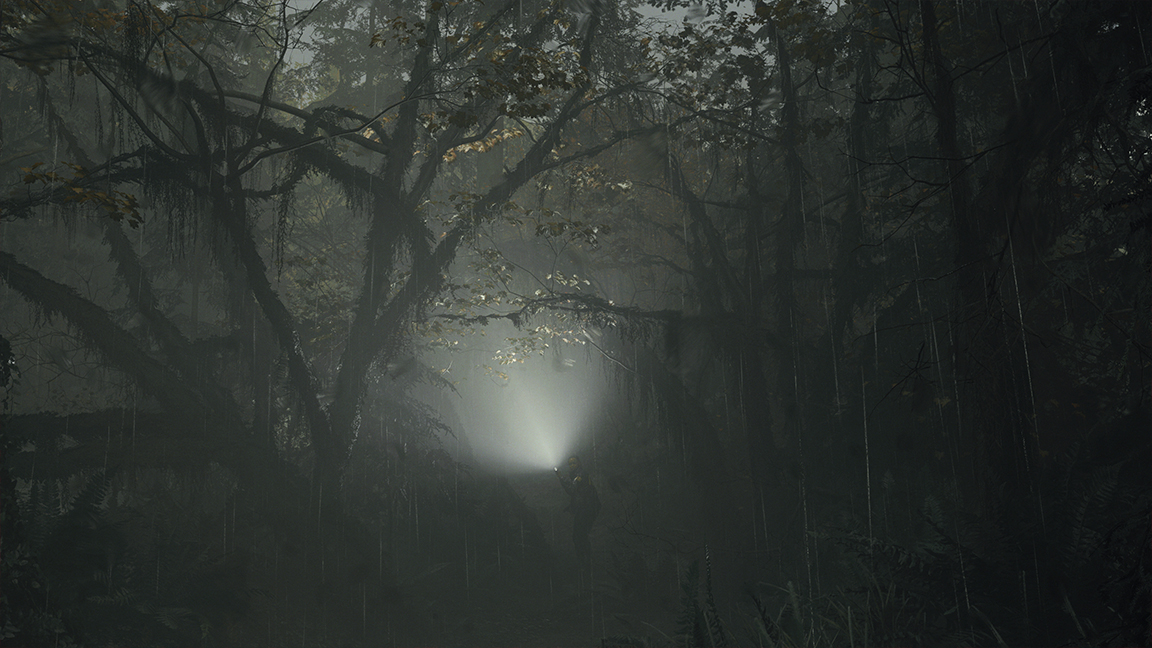
Get it right, and environmental storytelling can feel natural. "One of the biggest goals for Cauldron Lake was to convey this feeling of being amid very, very dense forest, almost like the forest maybe doesn't want you to be there - [It's] kind of like creeping in on you," says Creagh-Peschau.
A malevolent force called the Dark Presence casts its supernatural shadows over Bright Falls, reflected in the forest’s composition. Creagh-Peschau's favourite example is the vine maple tree, the long winding branches of which cast a wonderfully foreboding silhouette of many grasping limbs.
One of the biggest goals for Cauldron Lake was to convey this feeling of being amid very, very dense forest
Ciara Creagh-Pesc, photogrammetry artist
Creagh-Peschau explains, "The fact that [vine maple trees have] become quite synonymous with Cauldron Lake is kind of an interesting visual reinforcement that Cauldron Lake is being taken over by the Dark Presence - that there are these creepy, viney trees everywhere, that actually only behave that way when they themselves don't have much access to light."
Returning to their reference diagram, Creagh-Peschau also shares, "Because Cauldron Lake is higher up in terms of altitude, we have a lot of these old growth trees that we really wanted to show off [because they're] very iconic to the Pacific Northwest - these Douglas firs and red cedars that only get this big when they've been growing for hundreds of years."
Not only is it realistic, but it gives a sense that these woods have been "lost to time". However, you won't just have to look up to see the team's hard work. "It's also edible, the grass species that we have in the game, it's an onion grass, specifically Alaskan onion grass." Creagh-Peschau jokes: "We're taking survival [horror] to another level!"
Alan Wake 2: it's all about storytelling

Careful management of resources is key to this survival horror experience, but mismanaging your ammo isn't the only place where one will find the devil is in the details. Acting upon the environment team's dense forests is an in-game weather apparatus that is largely systemic.
"Why is it systemic?" Head of VFX Johannes Richter begins, "Because we want to be able to control the weather without scripting. We don't want to be like, 'Oh, this place, it will always be raining. In this place, it will always be windy.' Because we use it a lot for storytelling."
For instance, a bluster shaking the boughs makes the forest seem angry, racking up the tension, whereas a more gentle breeze coupled with soft rainfall instead suggests an unwelcoming sense of primordial indifference.

"Maybe you've noticed this as part of the demo […] that the wind picks up and then usually something happens after, and of course that is very narrative driven, and you never really know when you want this to happen - so it needs to be able to happen everywhere," Richter continues.
Water is just as important (as you might expect from a place called Bright Falls). "We have different types of water - there's the lake, there's rivers, and waterfalls, and all sorts of other things that you can encounter out in the woods. Sometimes we have flooded areas on the inside, and all that kind of stuff is being supported by the system," Richter says.
Much of this ambition is only possible thanks to advances in hardware on current-gen consoles and PCs like PlayStation 5 and Xbox Series X. "You just need the power and the memory to do all that background calculation," he says.
Alan Wake 2: gore, gore and more gore
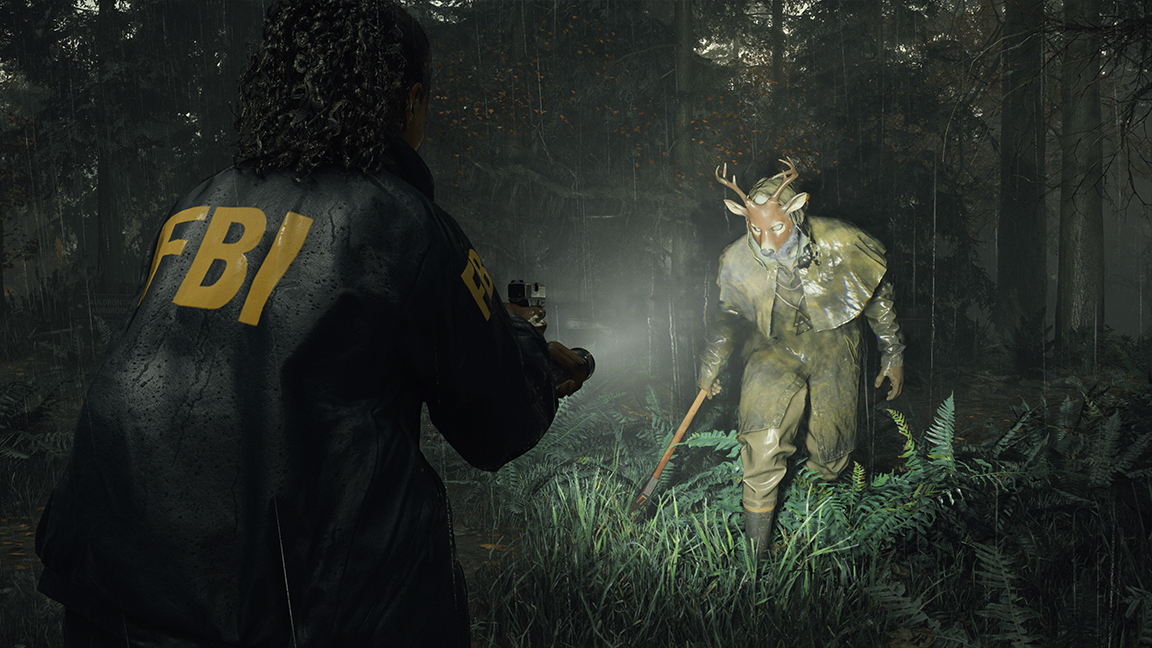
The darkness that has a hold on Bright Falls can affect people too. Enter the Taken, possessed enemies wrapped in a shield of darkness that has to be burnt away by torchlight before they'll take damage.
A new gore system, naturally, helps sell the blasting you'll be doing. The look of damage changes depending on what weapon you use alongside other factors; a grazing shot from a pistol will look very different to a shotgun blast, for instance.
Richter eloquently explains how this effect is achieved, "[The Taken] have a little meat man on the inside - the flesh mesh." He shows me a character model on screen, over which he drags a cursor to reveal meaty innards, "That's a pretty nifty kind of grim thing - they will start to look a bit like a pizza."
It's not Resident Evil-like dismemberment, but more light body horror as Alan Wake 2 is more geared towards building a foreboding atmosphere alongside psychological scares.
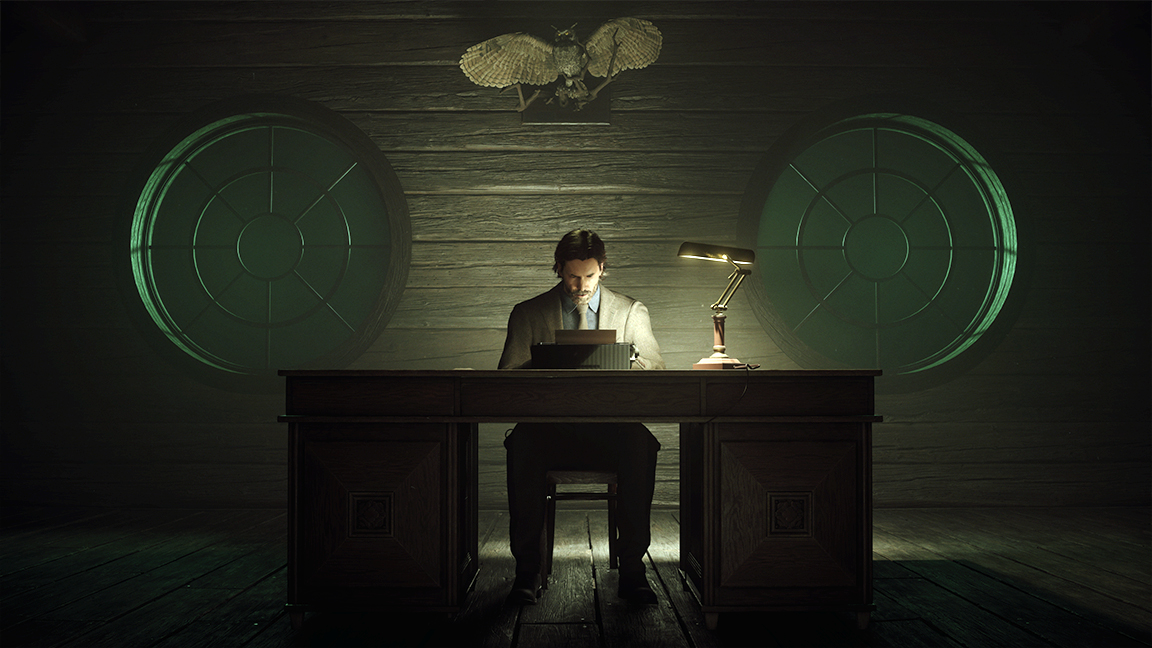
Pizza party enemies aside, I ask Johannes Richter about the plunger inscribed with the words 'Janitor's Worst Nightmare' on his desk. I'm told that it's an award from a recent Remedy Christmas party. The awards look different every year, but the plunger in question is a playful reference to the enigmatic janitor, Ahti, from Remedy's 2019 title Control.
Richter says, "It's because I've been trying to install Hawaiian shirt Fridays to make everyone's life a bit more colourful on a Friday [during] the dark winter or something - and that was the award for that!"
Creagh-Peschau has collected research that bridges the geographical gap between developer and source of inspiration
Returning to the desk of foliage and photogrammetry artist Ciara Creagh-Peschau, I ask after their little moss tablemate I see on their desk. They explain, "I basically found an unfortunately loose patch of moss on the ground on the way to work at some point, and I was like 'This is going to be good reference for when I make moss.' And it has been! And I've just decided to keep it around - I got quite attached to it."
This moss species may be Finnish rather than Pacific Northwestern, but it all helps alongside a wealth of research Creagh-Peschau has collected that bridges the geographical gap between developer and source of inspiration.
Creagh-Peschau says: "Weirdly there are quite a lot of biology lecturers from Washington State that have done YouTube videos that have 200 views for their students that are perfect!"
But like plants, it's all about cultivation, and even after the season shifts, some things you keep with you to inspire projects anew. Creagh-Peschau shares, "Yeah, my moss friend will stay with me even after this project."






